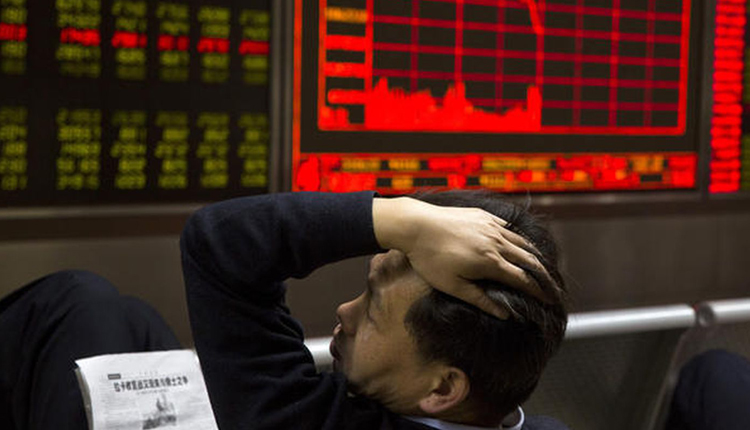Asian markets were mixed on Friday as investors watched yields on longer duration U.S. Treasurys as well as for developments on the U.S.-China trade front.
Mainland Chinese stocks advanced on the day, with the Shanghai composite up 0.29 percent to 2,823.82 and the Shenzhen component gaining 0.57 percent to 9,060.92. The Shenzhen composite rose 0.554 percent to 1,525.48.
Hong Kong’s Hang Seng index added 0.85 percent, as of its final hour of trading. Hong Kong-listed shares of Ping An Insurance Group jumped 2.52 percent after the company announced its strongest first half profit growth in a over a decade on Thursday.
In Japan, the Nikkei 225 recovered from an earlier slip to finish its trading day fractionally higher at 20,418.81, while the Topix index closed 0.1 percent higher at 1,485.29.
Meanwhile, South Korea’s Kospi slipped 0.58 percent to close at 1,927.17 following its return from a holiday. Shares of chipmaker SK Hynix fell 0.65 percent and LG Chem shed 1.08 percent. Australia’s S&P/ASX 200 ended its trading day just below the flatline at 6,405.50.
Overall, the MSCI Asia ex-Japan index added 0.38 percent .
US bonds watch
Investors watched for movements in the bond market, particularly in U.S. Treasurys. The yield on the 30-year Treasury bond declined to a record low on Thursday, while the yield on the benchmark 10-year Treasury note touched a three-year low.
The yield on the 30-year Treasury bond was last at 2.0078 percent, while the rate on the 10-year Treasury note was at 1.5521 percent.
The historic drop in long-term U.S. bond yields came after the interest rates on the closely watched 10-year and 2-year Treasurys inverted — an bond market phenomenon that has historically been a reliable indicator of economic recessions.
“I think it’s one indicator and obviously market practitioners do look at this … as an important leading indicator of potential recession but I think what’s perhaps what’s been slightly overdone by some market commentators is that recession is imminent and guaranteed, which we … absolutely do not agree with.” Roger Bacon, head of Asia Pacific investments at Citi Private Bank, told CNBC’s “Street Signs” on Friday.
“I think it’s too early to conclude that it’s an automatic indicator that (a) recession is definitely happening and that a recession is imminent,” he said.
US-China trade
Meanwhile, investors also monitored developments on the U.S.-China trade front. A spokesperson from China’s foreign ministry said Thursday that Beijing hopes the “U.S. side will meet China half-way ” on trade issues.
That statement came after China said earlier that the U.S. tariffs “seriously violated” a consensus reached by the two countries’ presidents at the G-20 summit in June.
For its part, U.S. Commerce Secretary Wilbur Ross told CNBC Wednesday that a recent delay in upcoming tariffs was “not a quid pro quo ” in trade negotiations with Beijing.
“The language used by both parties oozes of continued defensiveness and antagonism,” Kathy Lien, managing director of foreign exchange strategy at BK Asset Management, wrote in a Thursday note.
“As long as this remains the case, investors will be nervous making it difficult for currencies and equities to rally,” Lien said.
Chinese yuan watch
On Friday, the People’s Bank of China set the official midpoint reference for the yuan at 7.0312 per dollar, weaker than expectations of 7.0306 against the greenback in a Reuters estimate.
“The 7 (yuan per dollar) level, having been breached, they can now take it down as the trade war worsens.” David Roche, president and global strategist at Independent Strategy, told CNBC’s “Squawk Box” on Friday.
“I expect the trade war to worsen and I expect the yuan to be at 7.35, 7.40 within a year,” Roche said.
The onshore yuan was last at 7.0424 against the greenback, while its offshore counterpart traded at 7.0524 per dollar.
The yuan has been closely watched since it depreciated past the 7 per dollar mark recently, leading the U.S. Treasury Department to designate China as a currency manipulator.
Currencies and oil
The U.S. dollar index, which tracks the greenback against a basket of its peers, was at 98.163 after bouncing from levels below 98.0 yesterday.
The Japanese yen traded at 106.15 against the dollar after a volatile session yesterday that saw seeing highs below 106.0. The Australian dollar changed hands at $0.6788 after rising from levels around $0.675 in the previous session.
Oil prices rose in the afternoon of Asian trading hours, with international benchmark Brent crude futures adding 1.13 percent to $58.89 per barrel and U.S. crude futures gaining 1.14 percent to $55.09 per barrel.
Source: CNBC
